High ceilings in bedrooms offer an incredible opportunity to create dramatic, luxurious spaces that feel both grand and intimate. While these soaring spaces can initially feel overwhelming, they present unique design possibilities that standard-height rooms simply cannot match.
The key lies in understanding how to balance the vertical expanse with thoughtful design elements that draw the eye upward while maintaining a cozy, restful atmosphere.
Whether you’re working with a newly constructed home featuring 12-foot ceilings or a historic property with original architectural details, high-ceiling bedrooms demand special consideration.
From selecting appropriately scaled furniture to incorporating lighting that enhances rather than diminishes the space, every decision impacts how the room feels and functions.
High Ceiling Bedroom Ideas
The challenge isn’t just filling the vertical space—it’s creating a harmonious environment that celebrates the height while ensuring the room remains a comfortable sanctuary for rest and relaxation.
1. Statement Lighting Fixtures
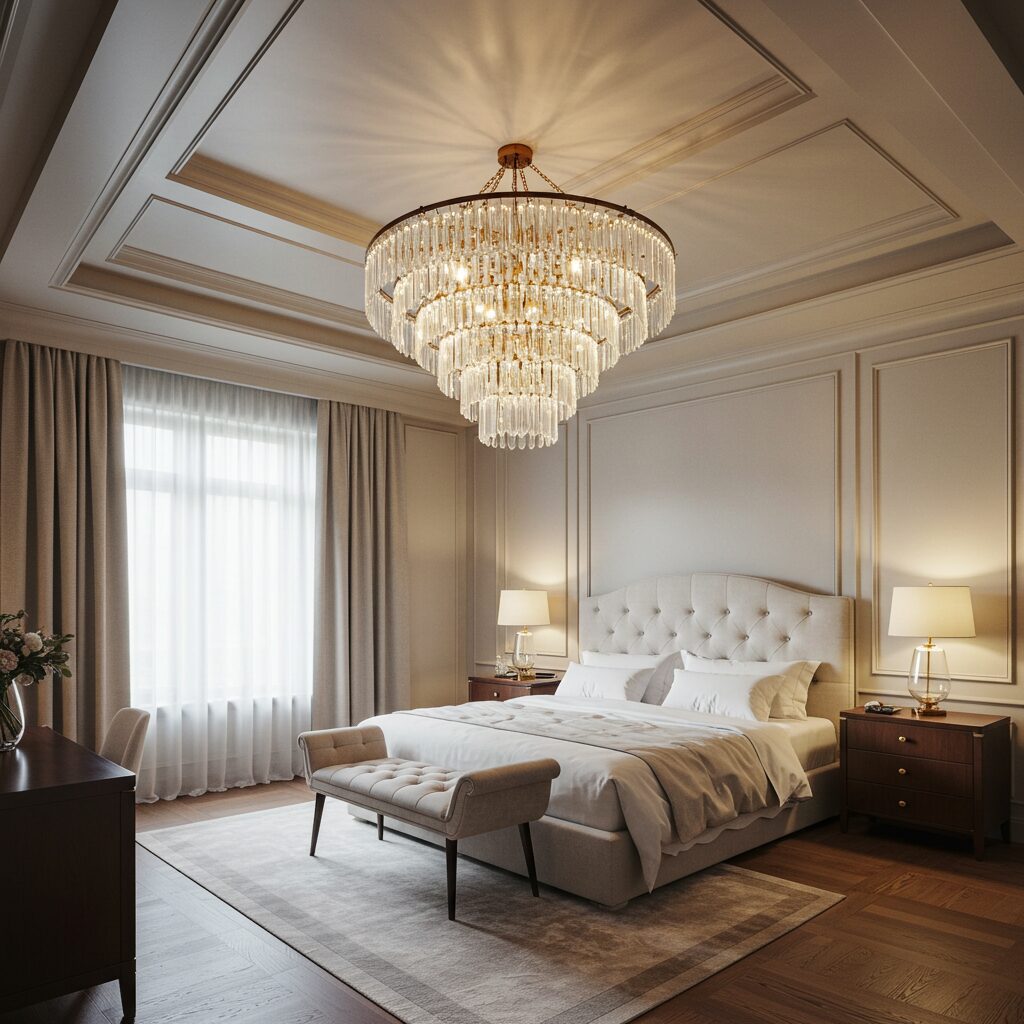
Oversized chandeliers or pendant lights serve as stunning focal points in high-ceiling bedrooms. These fixtures not only provide essential illumination but also help bridge the gap between the bed level and the ceiling, creating visual continuity throughout the vertical space.
Consider fixtures with multiple tiers or cascading elements that emphasize the room’s height rather than competing with it. Crystal chandeliers work beautifully in traditional settings, while modern geometric pendants complement contemporary aesthetics.
The proportions matter significantly—a fixture that seems large in a standard room may appear diminutive in a high-ceiling space. I’ve found that going slightly larger than your initial instinct often yields the most balanced and impactful results.
2. Dramatic Curtain Treatments

Floor-to-ceiling curtains maximize the vertical drama of high-ceiling bedrooms while adding softness and warmth. Hanging curtains from the ceiling line rather than just above the window frame creates an illusion of even greater height and makes windows appear larger.
Choose fabrics that complement your room’s style—flowing silks for elegance, heavy velvets for coziness, or crisp linens for a fresh, modern look. The key is ensuring the curtains pool slightly on the floor for a luxurious finish.
Pro Tip: Install curtain rods at least 12 inches from the ceiling to allow the fabric to hang beautifully without appearing cramped against the architectural details.
3. Vertical Wall Art Arrangements
Gallery walls that extend upward draw attention to your room’s impressive height while adding personality and visual interest. Create arrangements that follow the natural lines of the space, using a mix of artwork sizes to maintain balance.
Consider incorporating a few statement pieces alongside smaller works to create rhythm and movement up the wall. This approach prevents the art from appearing lost in the expansive wall space.
Mirrors strategically placed within the arrangement can reflect light and create the illusion of even more space. I particularly love combining photographs, paintings, and sculptural elements for a curated, collected-over-time aesthetic.
4. Tall Headboard Designs
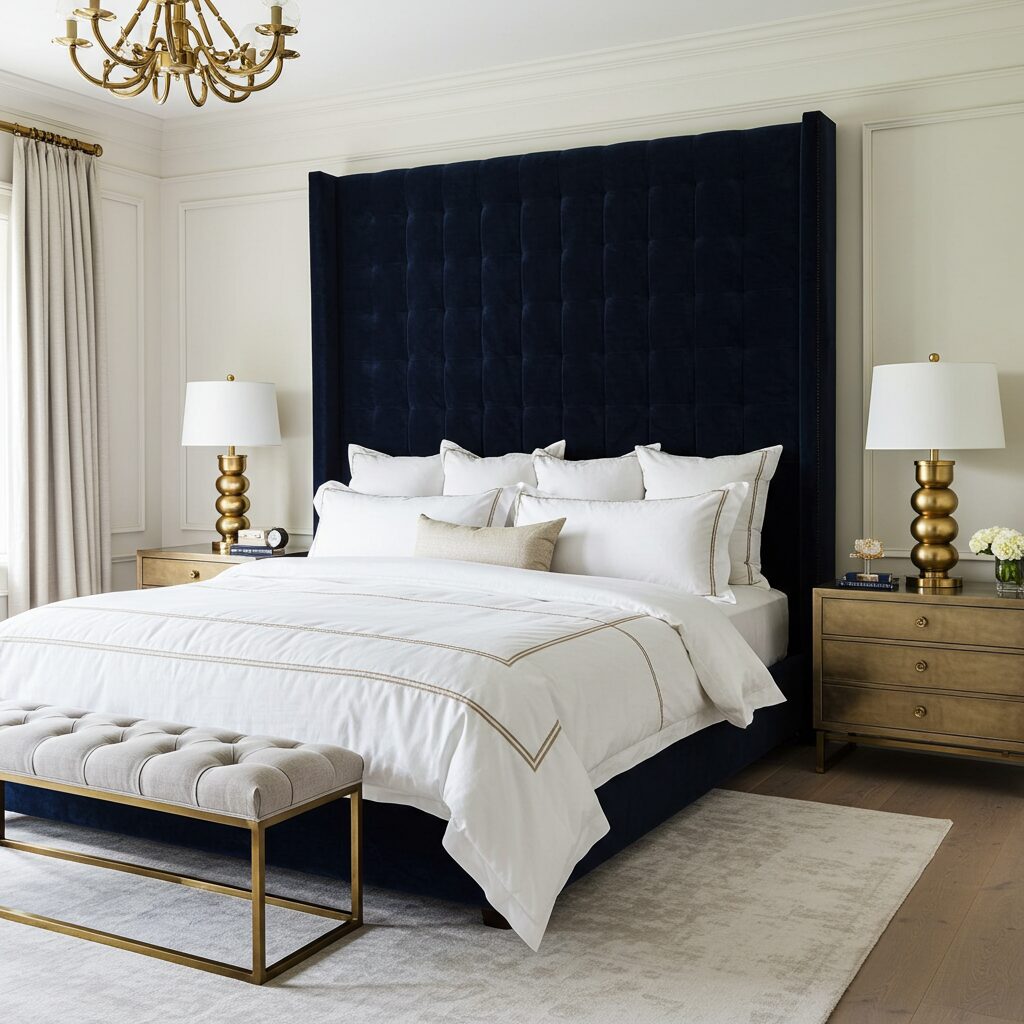
Custom or oversized headboards that extend toward the ceiling create a sense of grandeur while anchoring the bed in the vast space. These dramatic focal points help establish proper scale and proportion in high-ceiling rooms.
Upholstered headboards in rich fabrics add texture and warmth, while wooden designs bring natural elements into the space. The height should be proportional to both the ceiling and the bed size for optimal visual impact.
Note: A headboard that’s too small will make your bed appear to float awkwardly in the space, while one that’s properly scaled creates a sense of intimacy within the grandeur.
5. Ceiling Beams and Architectural Details
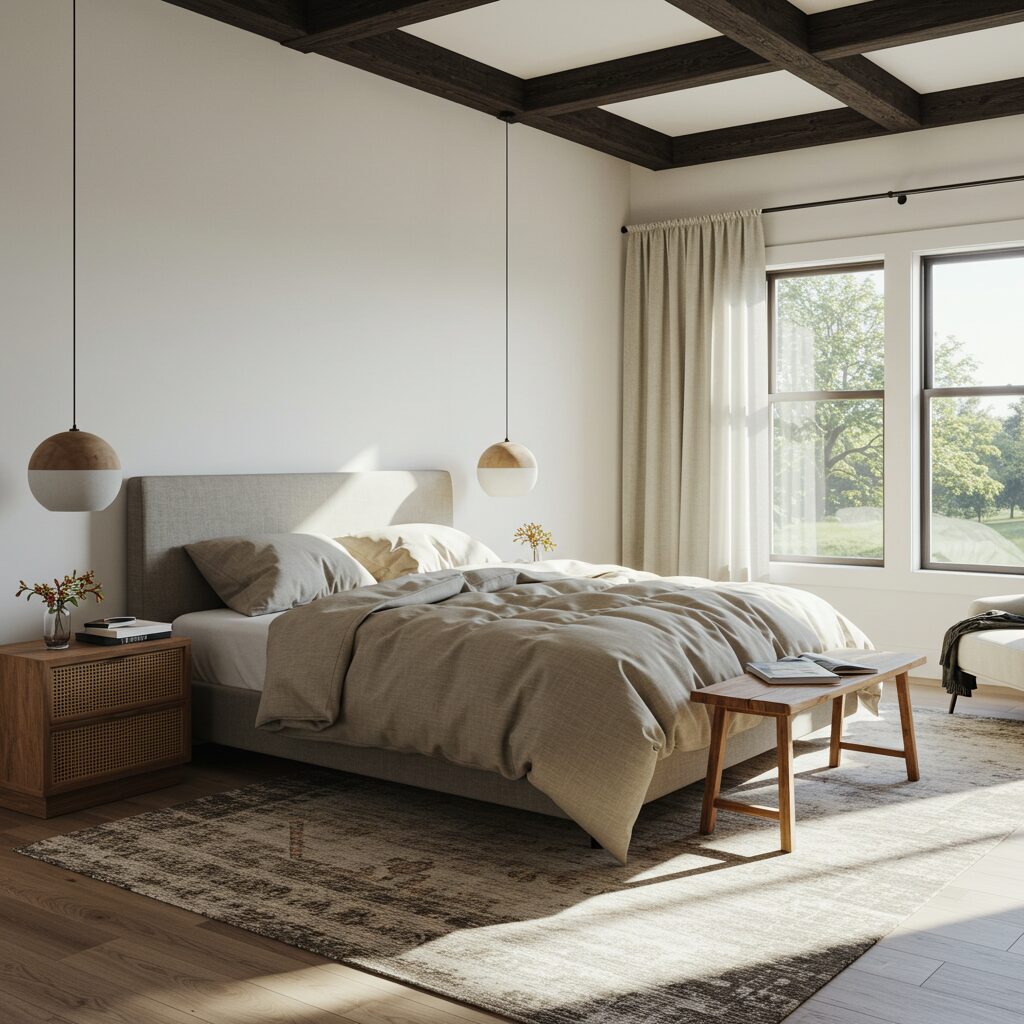
Exposed wooden beams or decorative ceiling treatments add character and help break up the expanse of a high ceiling. These elements create visual interest overhead while maintaining the room’s spacious feel.
Whether you choose rustic reclaimed wood beams for a farmhouse aesthetic or sleek metal elements for a modern look, ceiling details should complement your overall design scheme. Painted beams can blend seamlessly with the ceiling or create contrast depending on your preference.
Consider adding LED strip lighting within beam channels for subtle ambient illumination that highlights the architectural features. This approach creates layers of light that enhance the room’s atmosphere during evening hours.
6. Layered Lighting Schemes
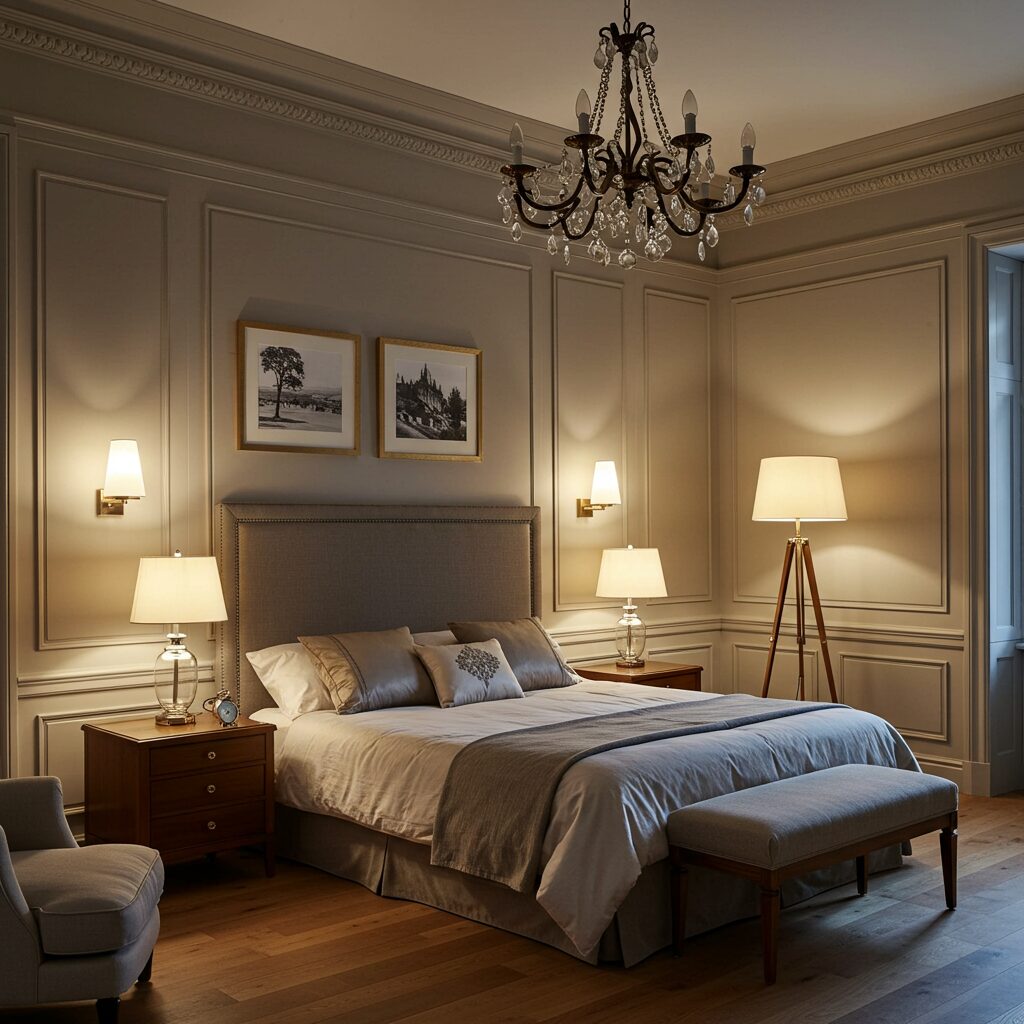
Multiple light sources at varying heights create depth and ambiance in high-ceiling bedrooms. Combine overhead fixtures with table lamps, floor lamps, and wall sconces to eliminate dark corners and create a warm, inviting atmosphere.
Dimmer switches allow you to adjust the mood throughout the day, from bright task lighting for reading to soft ambient light for relaxation. Consider the placement of each light source to ensure even distribution without creating harsh shadows.
Tip: Position floor lamps in corners or beside seating areas to bring light down to living level and create intimate pockets within the larger space.
7. Tall Plants and Greenery
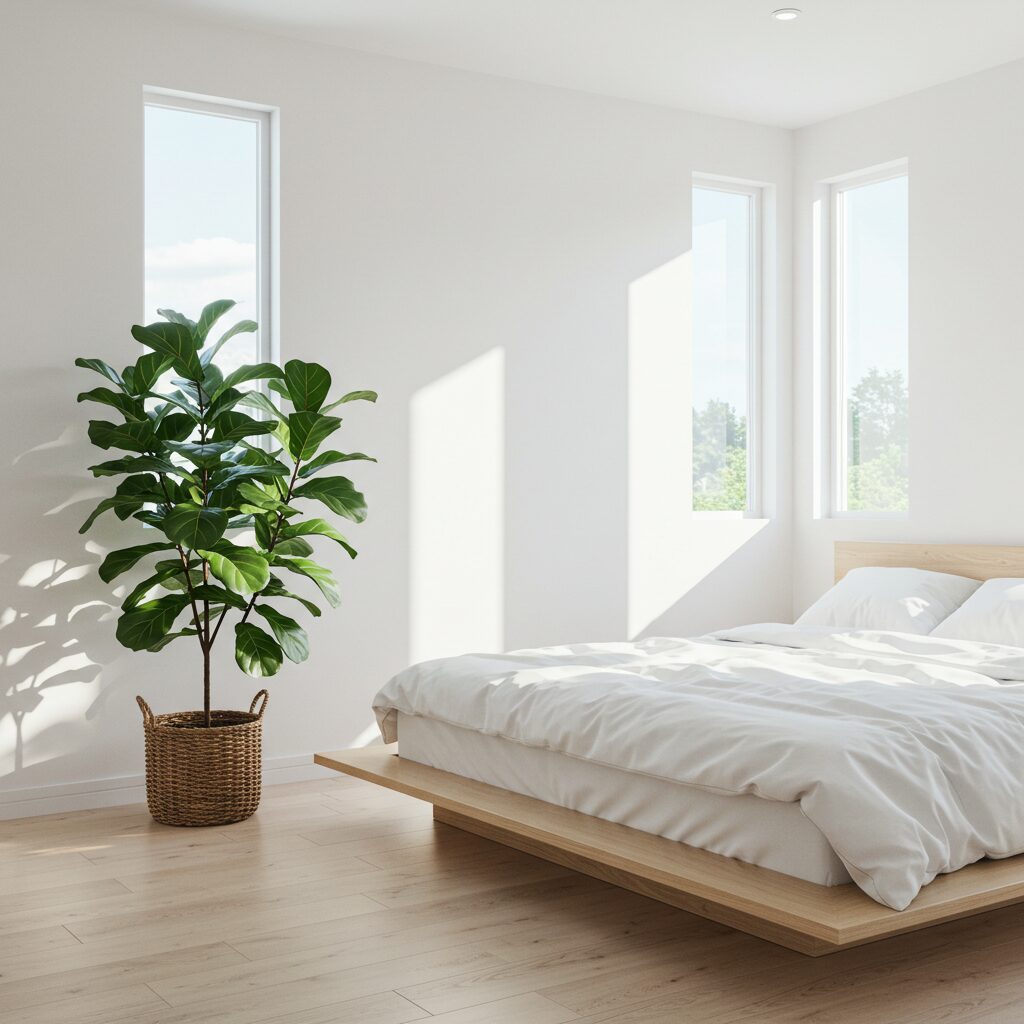
Large-scale plants help fill vertical space naturally while bringing life and color to high-ceiling bedrooms. Choose specimens that can handle indoor conditions and grow to impressive heights, such as fiddle leaf figs, rubber plants, or bird of paradise.
Position plants strategically to create natural room divisions or to soften hard architectural lines. The organic shapes and textures provide a beautiful contrast to structured furniture and geometric room elements.
Consider using decorative planters that complement your design aesthetic—sleek ceramic for modern spaces or woven baskets for bohemian styles. Proper lighting and placement ensure your plants thrive while enhancing the room’s overall ambiance.
8. Accent Walls with Texture

Textured accent walls add visual weight and interest to high-ceiling bedrooms without overwhelming the space. Options include wood paneling, stone veneer, fabric panels, or decorative wallpaper that extends from floor to ceiling.
The texture should complement rather than compete with other room elements. A subtle grasscloth wallpaper can add warmth, while a bold geometric pattern creates drama and serves as a focal point.
I’ve found that positioning the accent wall behind the bed creates a natural focal point that grounds the sleeping area within the larger space. The texture catches and reflects light differently throughout the day, adding dynamic visual interest.
9. Canopy Bed Configurations

Four-poster or canopy beds naturally fill vertical space while creating an intimate sleeping environment within a grand room. These beds work particularly well in high-ceiling spaces because they don’t compete with the architecture but rather complement it.
Choose designs that suit your style—sleek metal frames for modern aesthetics or ornate wooden posts for traditional elegance. The canopy fabric can be sheer for a romantic feel or omitted entirely for a clean-lined look.
Pro Tip: Ensure the canopy height is proportional to your ceiling height—aim for the canopy to be roughly two-thirds the height of your ceiling for optimal visual balance.
10. Built-in Storage Solutions

Floor-to-ceiling built-in wardrobes or storage units maximize both function and visual impact in high-ceiling bedrooms. These custom solutions create clean lines while providing ample storage for clothing, linens, and personal items.
Design built-ins to complement your room’s architectural style, whether that’s sleek modern panels or traditional raised-panel doors. Consider incorporating display areas for books, decorative objects, or plants to add personality.
The key is ensuring the proportions feel right for the space—built-ins should enhance rather than dominate the room. Proper lighting within the units makes them functional while contributing to the overall lighting scheme.
11. Mezzanine or Loft Elements

Partial mezzanines or loft areas add functional space while celebrating the room’s height. These elements can house reading nooks, home offices, or additional storage while maintaining the open, airy feel of the main bedroom.
Consider the structural requirements and ensure proper safety features like railings and adequate headroom. The design should feel integrated with the overall room rather than like an afterthought.
Note: Mezzanines work best in rooms with ceilings of 14 feet or higher to ensure comfortable headroom both above and below the platform.
12. Oversized Mirrors

Large mirrors amplify light and create the illusion of even more space in high-ceiling bedrooms. Position mirrors to reflect windows or light sources, multiplying the natural illumination throughout the room.
Consider mirrors with interesting frames that add to the room’s design aesthetic. Antique mirrors bring character to traditional spaces, while sleek frameless options suit contemporary rooms.
The placement and size should be proportional to the wall and surrounding furniture. A mirror that’s too small will appear insignificant, while one that’s properly scaled becomes a beautiful focal point.
13. Color Schemes That Enhance Height
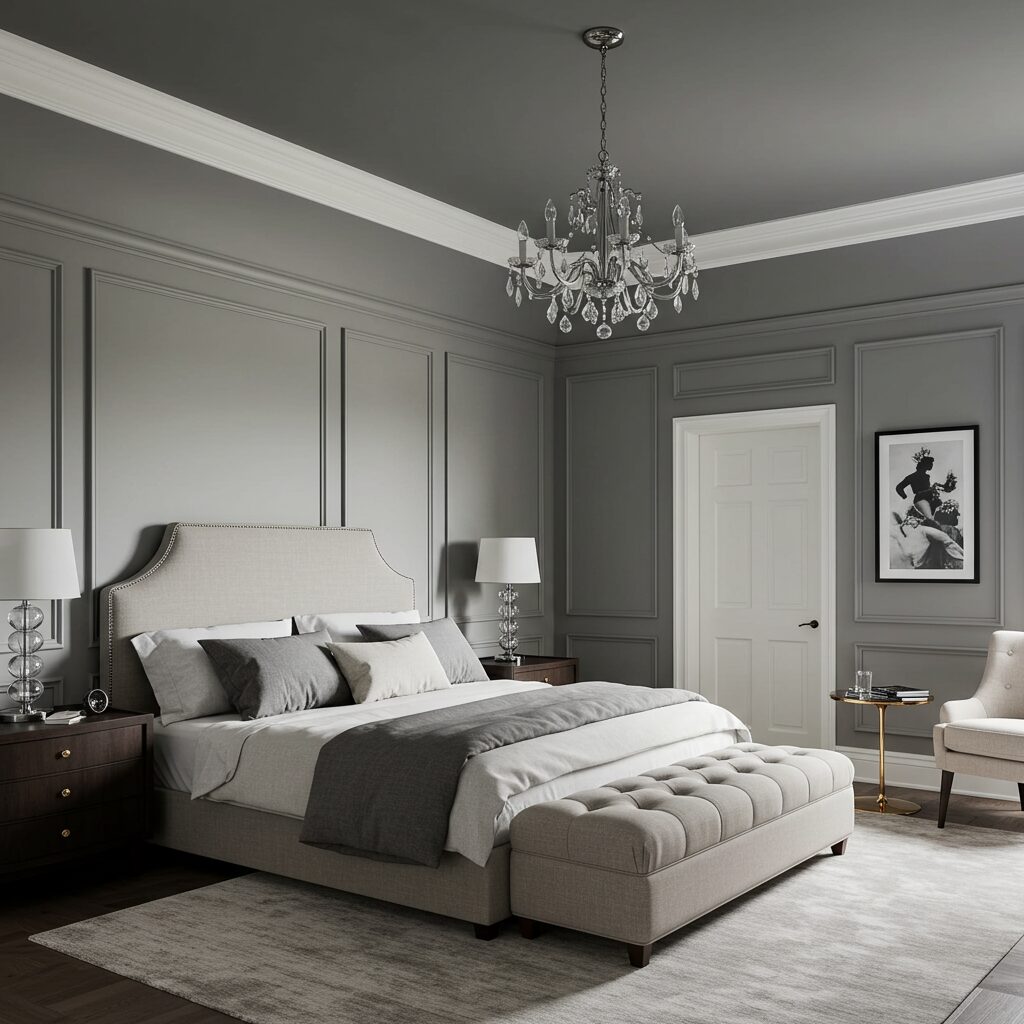
Strategic color choices can either emphasize or diminish the impact of high ceilings. Light colors on walls and ceilings create an airy, open feeling, while darker colors can make the space feel more intimate and cozy.
Consider using different tones on walls versus ceilings to create visual interest. A darker ceiling can actually make a room feel more intimate without sacrificing the sense of space.
Tip: Painting the ceiling the same color as the walls creates a seamless flow that emphasizes height, while contrasting colors can define different zones within the room.
14. Fireplace as Vertical Focal Point
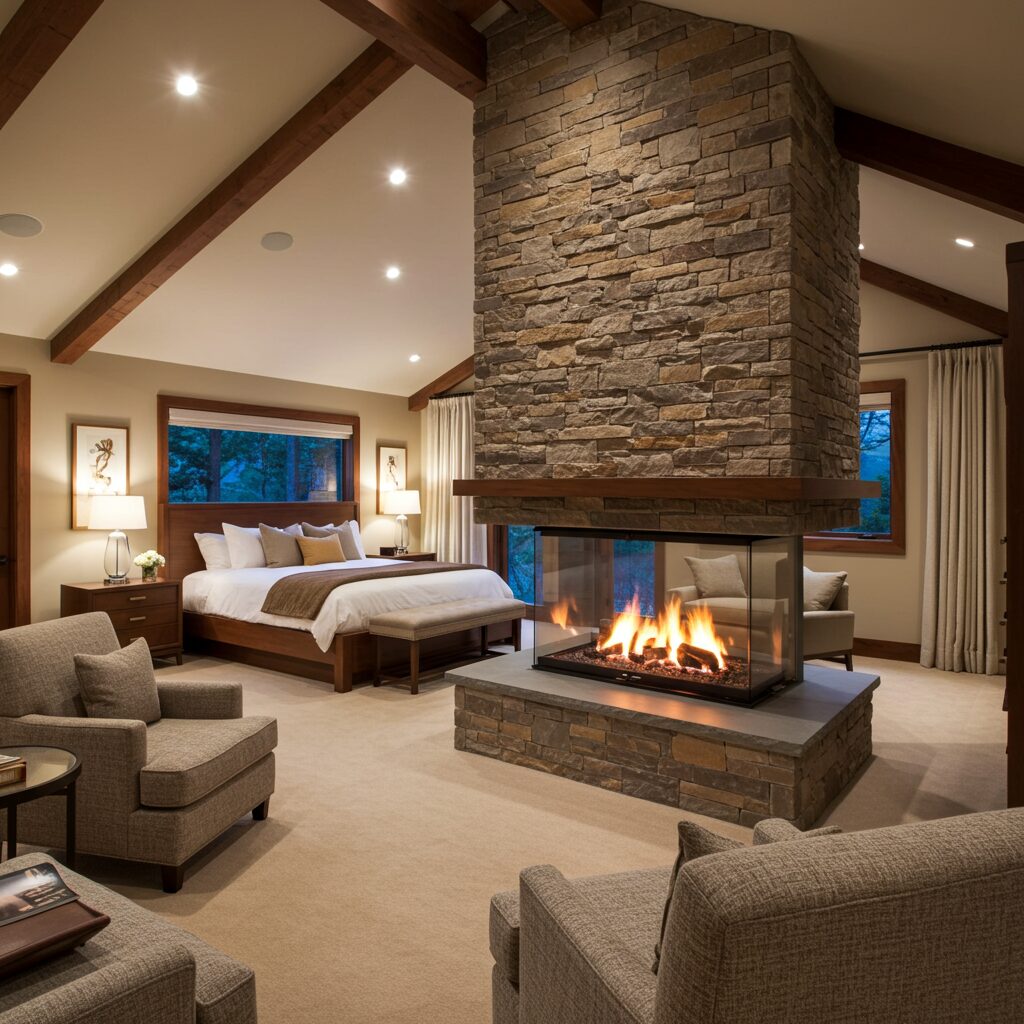
A tall fireplace surround or stacked stone design draws the eye upward while providing a cozy focal point. These installations work particularly well in high-ceiling bedrooms because they help establish scale and create a sense of warmth.
Consider modern linear fireplaces that extend vertically, or traditional designs with tall mantels and decorative surrounds. The materials should complement your overall design scheme while standing out as a significant architectural feature.
Position seating nearby to create a cozy conversation area that takes advantage of the fireplace’s warmth and ambiance. This arrangement helps create intimate zones within the larger space.
15. Window Treatments for Tall Windows
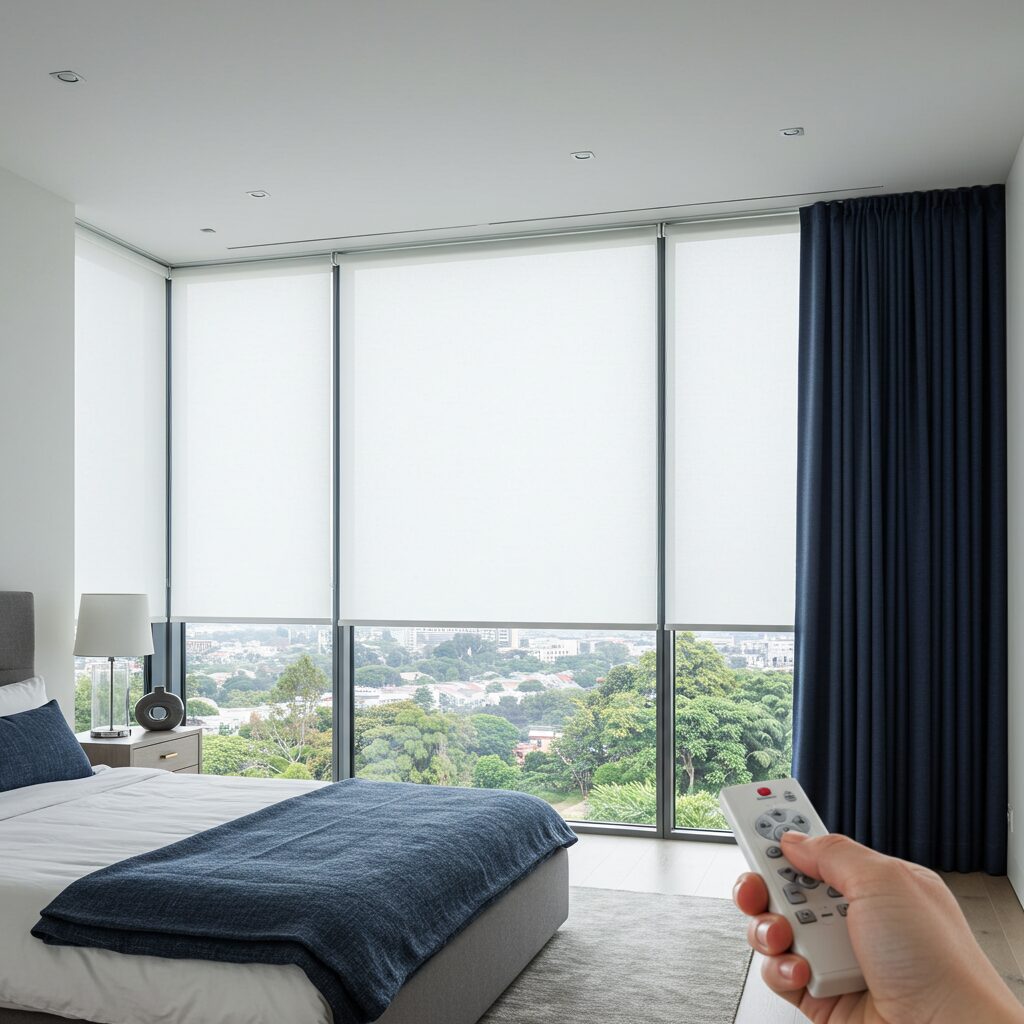
Tall windows in high-ceiling bedrooms require treatments that enhance their dramatic proportions while providing privacy and light control. Consider motorized blinds or shades for windows that are difficult to reach manually.
Layer treatments for maximum flexibility—sheer panels for daytime privacy with heavier drapes for complete darkness. The hardware should be substantial enough to support the weight and length of the treatments.
Custom solutions often work best for unusually tall windows, ensuring proper fit and function. The investment in quality window treatments pays dividends in both aesthetics and functionality.
Conclusion
High ceiling bedrooms offer unparalleled opportunities to create truly spectacular living spaces that combine grandeur with comfort.
The key to success lies in understanding how to work with the vertical space rather than against it, using design elements that celebrate the height while maintaining the intimacy essential for a restful bedroom environment.
From statement lighting fixtures that bridge the gap between floor and ceiling to strategic furniture placement that creates proper scale, each element plays a crucial role in the overall design success.
The most effective high-ceiling bedroom designs incorporate multiple strategies, layering lighting, texture, color, and architectural details to create spaces that feel both impressive and inviting.
Remember that proportion is everything in these spaces—what works in a standard-height room may need to be scaled up significantly to achieve the right visual impact.
With thoughtful planning and attention to detail, your high-ceiling bedroom can become a stunning retreat that maximizes both the architectural drama and the peaceful sanctuary you need for rest and relaxation.